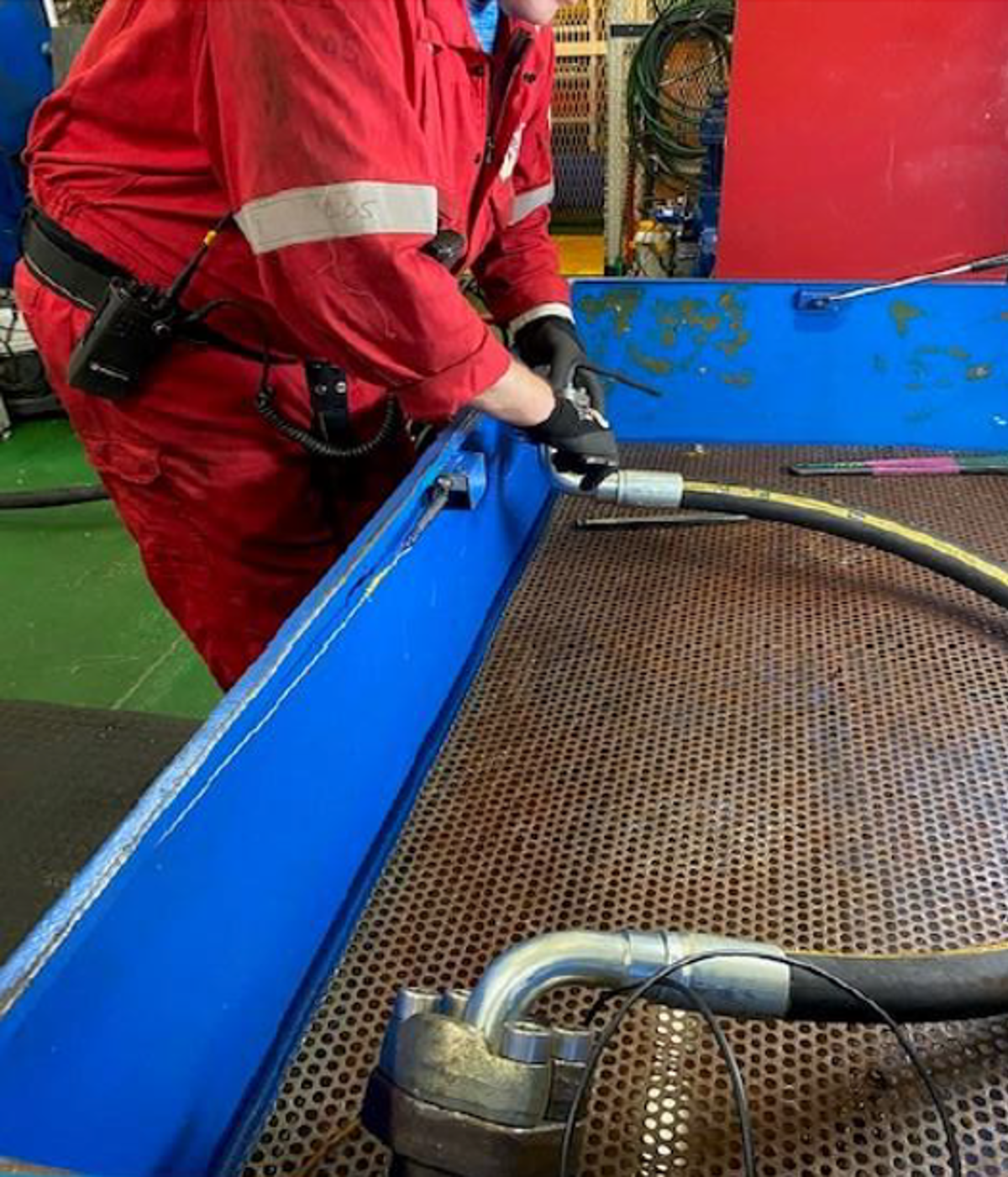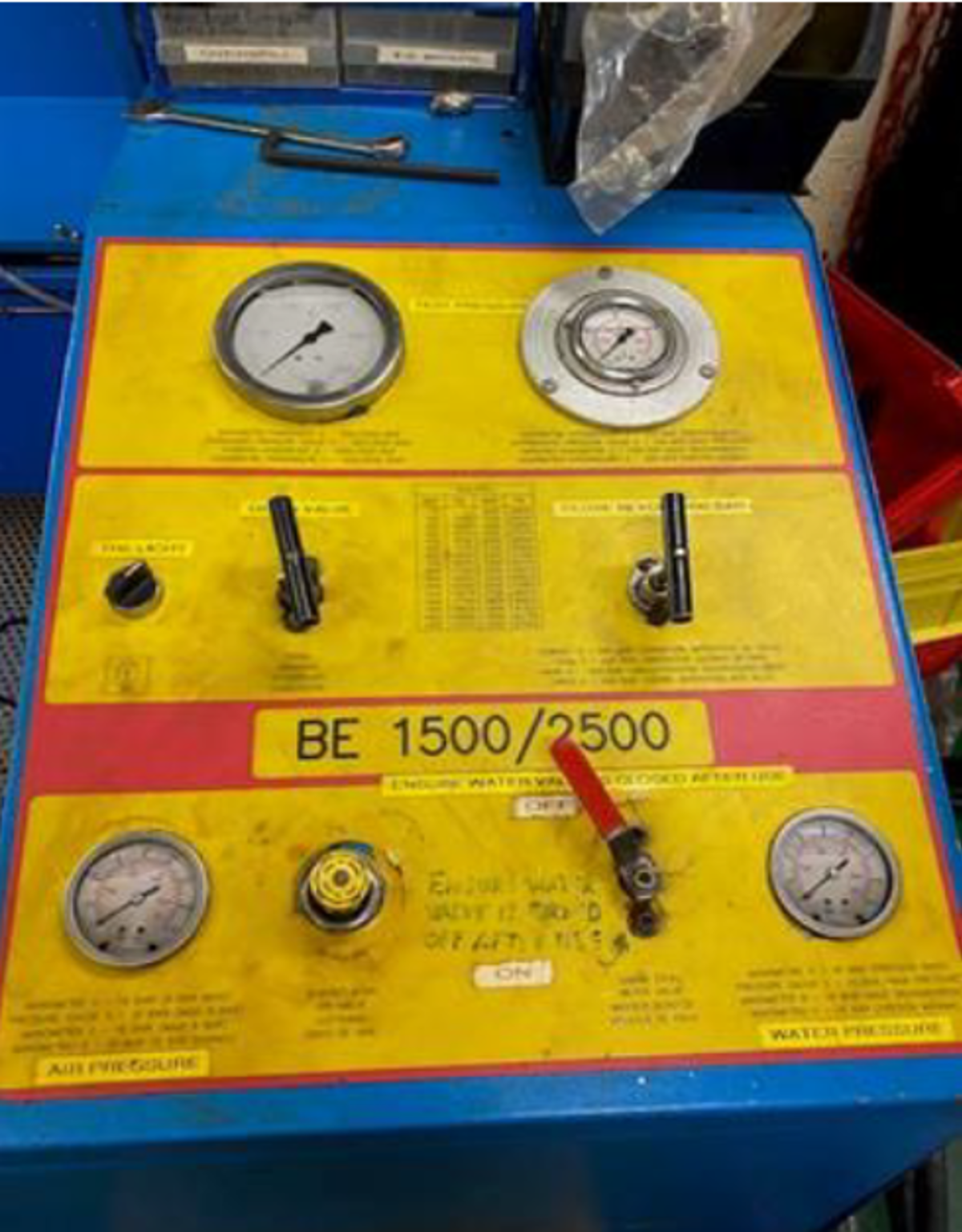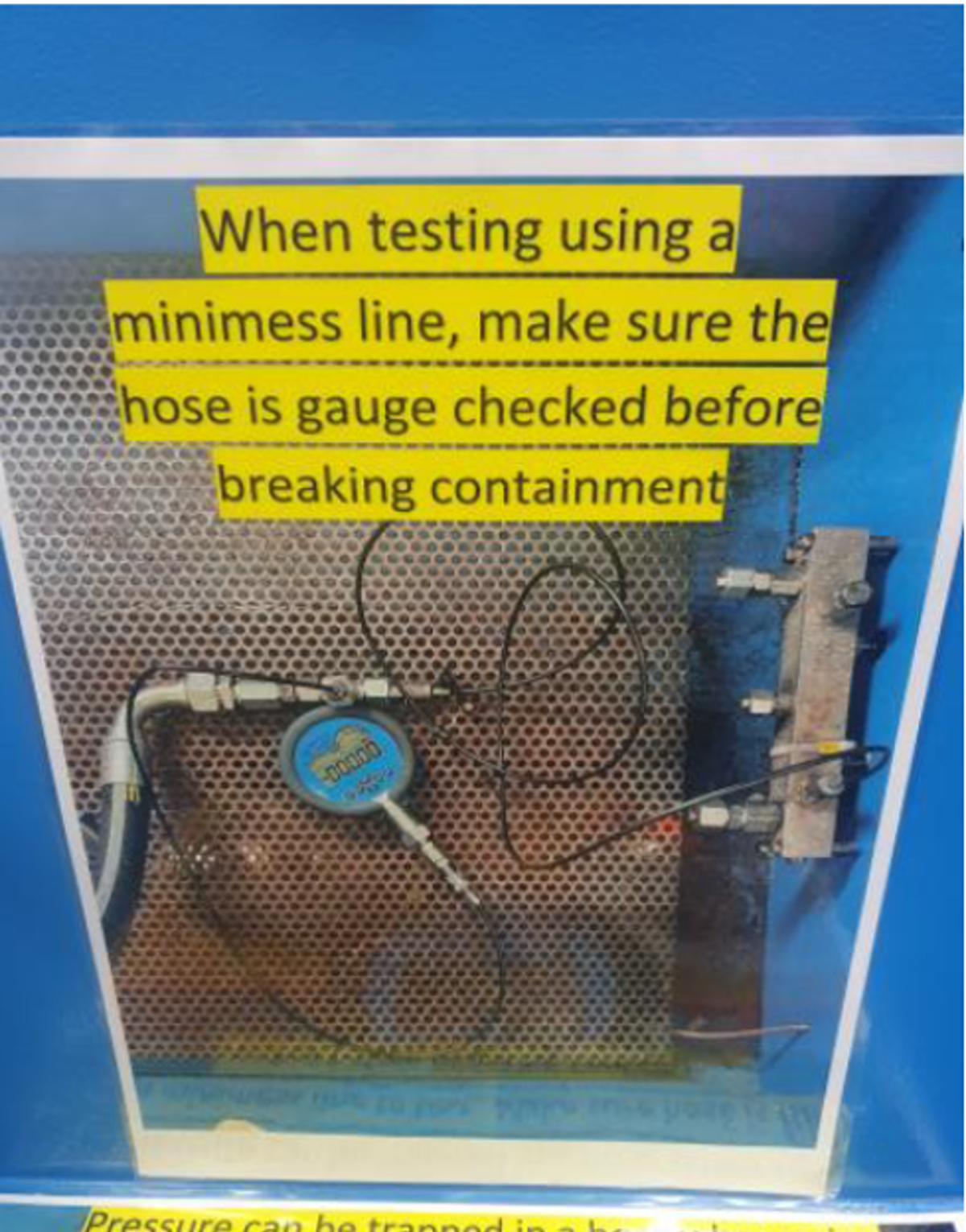Cut and bruise to right hand whilst pressure testing
- Safety Flash
- Published on 4 April 2023
- Generated on 11 December 2025
- IMCA SF 09/23
- 2 minute read
Jump to:
A technician was pressure testing hydraulic hoses in the hydraulic workshop using the water pressure test bed.
What happened?
The technician had previously tested two hoses earlier in his shift. On completion of pressure testing the third hose the technician opened the drain valve and witnessed the gauge go down to 0 bar.
The technician then proceeded to remove the blanking flange from the opposite end of the hose he was testing. When doing so a release of pressure occurred knocking his hand onto the wall of the test kit resulting in a laceration to the palm and a bruise to the back of his right hand.



What were the causes?
- The technician assumed that as the reading on the gauge had dropped to zero, it would be safe to release the fitting. But the larger volume equated to a longer drain time.
- Pressure was trapped because the connection was mistakenly slackened too quickly after opening the drain valve. This resulted in the check valve in the hose to close and trap the remaining pressure in the hose. The hoses were “Minimess” hoses.
- Though the gauge on the control panel was reading zero it would have taken a few more seconds for the pressure to dissipate from the test hose due to the larger (3.75cm) diameter.
- Pressure was released when the technician started to remove the blanking flange.
Lessons learned
- Create a routine duty for the testing of “Minimess” hoses and update the appropriate task risk assessment.
- WAIT a moment! Allow a delay of 10 seconds from when main pressure valve is opened, and always install a second gauge on the test hose after the “Minimess” to ensure the test hose has zero pressure.
- Post better instructions on the test rig reminding users of precautions when testing hose and to ensure pressure is drained from the test hose.
Related safety flashes
-
IMCA SF 19/19
12 August 2019
-
-
IMCA SF 26/16
6 October 2016
-
IMCA SF 08/06
22 June 2006
IMCA Safety Flashes summarise key safety matters and incidents, allowing lessons to be more easily learnt for the benefit of the entire offshore industry.
The effectiveness of the IMCA Safety Flash system depends on the industry sharing information and so avoiding repeat incidents. Incidents are classified according to IOGP's Life Saving Rules.
All information is anonymised or sanitised, as appropriate, and warnings for graphic content included where possible.
IMCA makes every effort to ensure both the accuracy and reliability of the information shared, but is not be liable for any guidance and/or recommendation and/or statement herein contained.
The information contained in this document does not fulfil or replace any individual's or Member's legal, regulatory or other duties or obligations in respect of their operations. Individuals and Members remain solely responsible for the safe, lawful and proper conduct of their operations.
Share your safety incidents with IMCA online. Sign-up to receive Safety Flashes straight to your email.